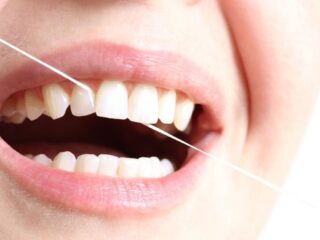
Lower back pain can be worsened if a person is in poor physical shape, with poor core strength and a lack of flexibility in the spine. A lack of muscle strength results in less stability, meaning the spine’s components, such as the vertebrae and discs can move unnaturally. Sudden shifts could cause misalignment, and fractures, or result in nerve compression, leading to pain and other symptoms.
This article will focus on the importance of core strength in preventing lower back injuries, as well as the benefits of exercise in treating existing conditions. Whether you are undergoing treatment for spondylolisthesis stage 1 or have been suffering from sciatica for many years, developing your core strength can have a significant and positive impact on lower back pain.
A Summary of Common Lower Back Injuries
Many conditions could affect the lower back (the lumbar region of the spine) which can cause pain and other symptoms such as a lack of mobility, weakness in the legs, and other discomfort. Many spinal conditions develop later in life, with most people over 50 suffering from issues such as deterioration of the intervertebral discs or reduced bone density in the vertebrae.
Spinal stenosis is one of the most common conditions that could cause lower back pain and involves the narrowing of the spinal canal. This narrowing can cause nerve compression or impact the spinal cord, and although some people experience no symptoms whatsoever, others can suffer from chronic, immobilizing pain.
Other conditions include spondylolisthesis, a condition that involves one of the vertebrae slipping forward, and a herniated disc when the soft inner tissue ruptures out of its protective shell. Degenerative disc disease, sciatica, and scoliosis can also cause lower back pain, as well as other symptoms.
Why is Core Strength Important for a Healthy Spine?
The core refers to the lower abdomen which includes the abdominal and posterior abdominal muscles. These muscles are made up of various segments, such as the pelvic floor muscles, rectus abdominis, transversus abdominis, multifidus, internal obliques, external obliques, erector spinae, and the diaphragm. These muscles are responsible for giving the body strength and stability.
If a person maintains poor posture for many years then the rest of the body can change which could result in a misalignment of the muscles and bones. Over time, bad posture can apply additional pressure to the joints in the spine, especially in the lower back, resulting in damage, deterioration, and the development of diseases and other spinal conditions.
An example of how the body can change due to poor posture is an anterior pelvic tilt which refers to the pelvic leaning forward in an unnatural position as a result of weak or tight muscles. This abnormality is commonly caused by tight hip flexors, gluteal muscles, or erector spinae. An anterior pelvic tilt could result in a curvature of the spine over time.
Issues such as this highlight the importance of core muscle strength as this not only prevents lower back pain but it also promotes better long-term spinal health, ensuring a person can continue to lead an active lifestyle even in their later years.
If a person’s core lacks sufficient strength then repetitive actions such as lifting, bending, and twisting can cause damage to the joints, discs, or vertebrae. As a result, the spine can become unstable and may be prone to strains, pulls, or fractures.
The Risks of a Weak Core
We have highlighted some of the risks and implications of having a weak core, with a lack of overall stability as the key risk factor, potentially resulting in damage to the spine. For persistent lower-back symptoms, a local clinician can assess movement patterns and provide graded rehab. In Alpharetta, Georgia, spine-focused chiropractic care often pairs manual therapy with core stabilization. A lack of stability typically leads to poor posture which causes the spine to be unnaturally compressed for long periods, eventually leading to early degeneration of the components that make up a person’s back.
Building up core strength is vitally important for maintaining a healthy spine, ensuring a person’s balance and posture is how it should be while reducing the likelihood of spinal diseases and conditions developing.

As well as lower back pain, other signs that a person may have a weak core include poor balance, an anterior pelvic tilt, a hunched or slouched posture, and difficulty performing some basic exercises.
Exercises for Improving Core Strength
There are many exercises a person can do to improve their core strength and overall physical condition. We will outline several exercises a person can do daily, gradually building up their core months to improve the overall health of their spine.
- Glute Bridge – A popular exercise that is easy to do at home is glute bridges which activate the gluteal muscles, strengthening an often underused part of the body which can result in a more robust and stable core.
- Hip Flexor Stretches – This simple stretch can reduce any tightness in the hip flexors to avoid an issue such as an anterior pelvic tilt.
- Single Leg Bridge – Similar to a glute bridge, this exercise involves keeping one leg in the air which is much more challenging. This can further strengthen the glutes and hamstrings to improve stability and strength.
- Leg Raises – Another simple but effective exercise is leg raises which involves lying with your back flat on the floor while lifting both legs off the floor and slowly lowering them again in a controlled fashion. This is a great way to work on the abdominal muscles.
As well as regular exercise to improve core strength, anyone suffering from spine-related problems should also maintain a healthy diet, avoiding food that is high in fat, sugar, and salt, especially processed foods that contain significant amounts of saturated fat. Instead back pain sufferers should aim to eat more oily fish, leafy greens, legumes, grains, and nuts.
Thank you for reading. We wish you luck in managing your lower back pain and reaching your exercise goals, and hope this article has offered some insights into the importance of strengthening your core.













